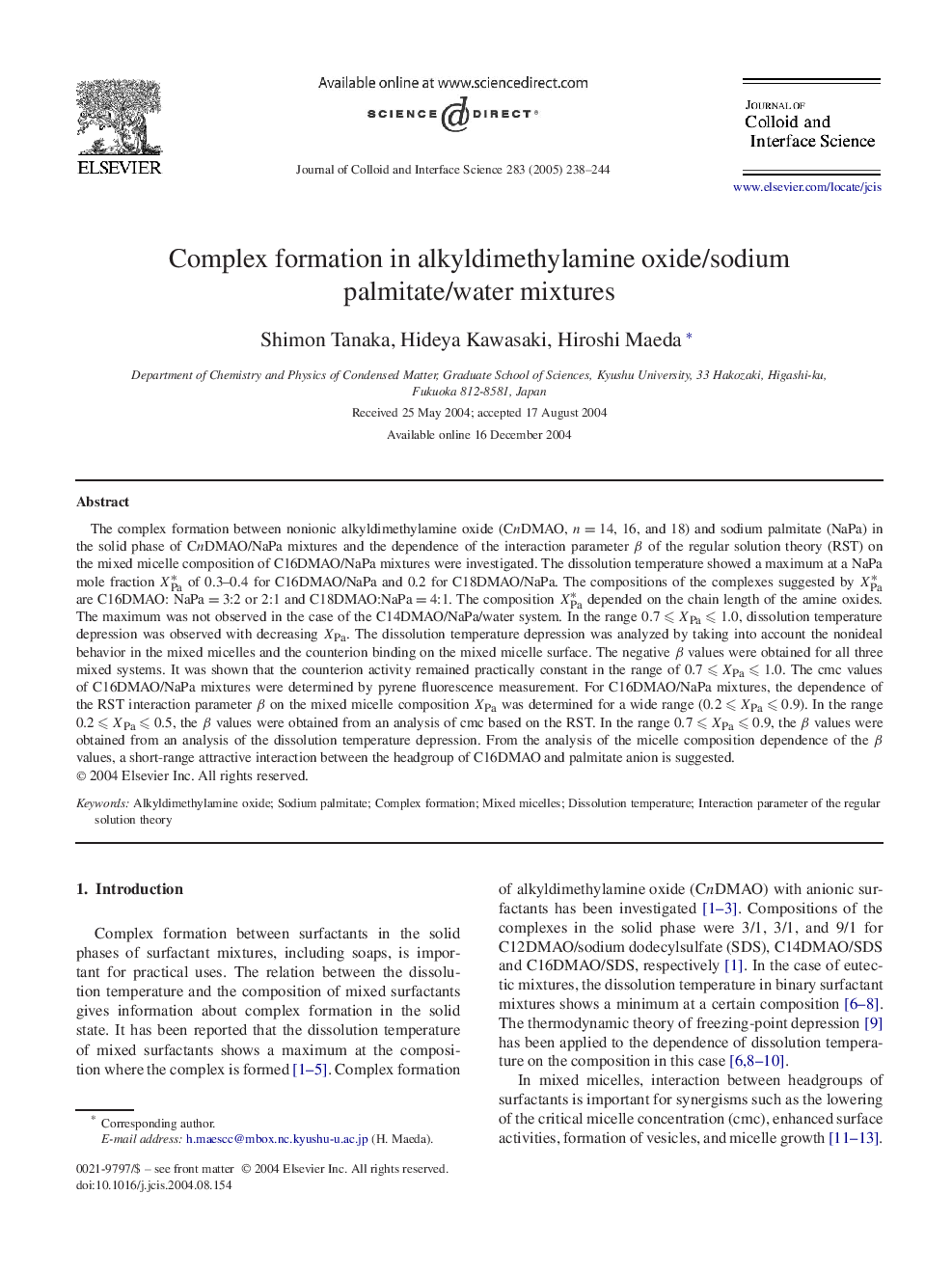| Article ID | Journal | Published Year | Pages | File Type |
|---|---|---|---|---|
| 10378480 | Journal of Colloid and Interface Science | 2005 | 7 Pages |
Abstract
The complex formation between nonionic alkyldimethylamine oxide (CnDMAO, n=14, 16, and 18) and sodium palmitate (NaPa) in the solid phase of CnDMAO/NaPa mixtures and the dependence of the interaction parameter β of the regular solution theory (RST) on the mixed micelle composition of C16DMAO/NaPa mixtures were investigated. The dissolution temperature showed a maximum at a NaPa mole fraction XPa* of 0.3-0.4 for C16DMAO/NaPa and 0.2 for C18DMAO/NaPa. The compositions of the complexes suggested by XPa* are C16DMAO: NaPa = 3:2 or 2:1 and C18DMAO:NaPa = 4:1. The composition XPa* depended on the chain length of the amine oxides. The maximum was not observed in the case of the C14DMAO/NaPa/water system. In the range 0.7⩽XPa⩽1.0, dissolution temperature depression was observed with decreasing XPa. The dissolution temperature depression was analyzed by taking into account the nonideal behavior in the mixed micelles and the counterion binding on the mixed micelle surface. The negative β values were obtained for all three mixed systems. It was shown that the counterion activity remained practically constant in the range of 0.7⩽XPa⩽1.0. The cmc values of C16DMAO/NaPa mixtures were determined by pyrene fluorescence measurement. For C16DMAO/NaPa mixtures, the dependence of the RST interaction parameter β on the mixed micelle composition XPa was determined for a wide range (0.2⩽XPa⩽0.9). In the range 0.2⩽XPa⩽0.5, the β values were obtained from an analysis of cmc based on the RST. In the range 0.7⩽XPa⩽0.9, the β values were obtained from an analysis of the dissolution temperature depression. From the analysis of the micelle composition dependence of the β values, a short-range attractive interaction between the headgroup of C16DMAO and palmitate anion is suggested.
Related Topics
Physical Sciences and Engineering
Chemical Engineering
Colloid and Surface Chemistry
Authors
Shimon Tanaka, Hideya Kawasaki, Hiroshi Maeda,
